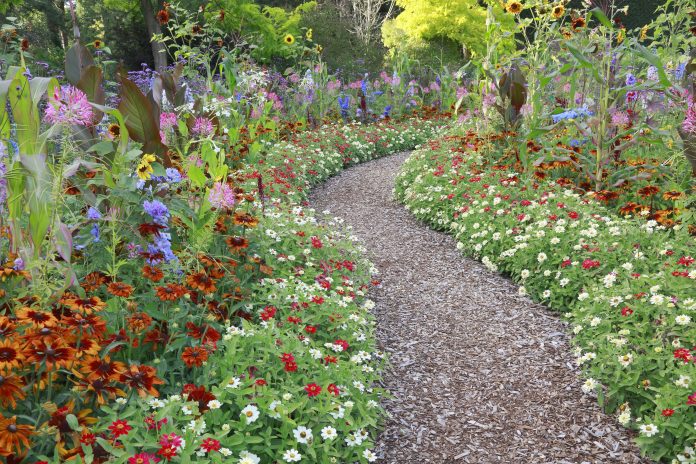Perennial flowers are the backbone of any beautiful garden, offering vibrant blooms year after year with minimal effort. Unlike annuals, which need to be replanted each season, perennials come back every spring, providing continuous color and interest. Whether you’re a novice gardener or an experienced green thumb, this comprehensive guide will help you successfully plant and grow perennial flowers in your garden.
Understanding Perennial Flowers
Perennials are plants that live for more than two years. They have a life cycle that includes growing, blooming, and going dormant before starting the process again the following season. Popular examples include day-lilies, cone-flowers, peonies, and hostas. Understanding the basic needs and characteristics of perennials will set you on the path to a flourishing garden.
Benefits of Perennials
- Longevity: With proper care, perennials can thrive for many years, reducing the need for frequent replanting.
- Cost-Effective: Although they might have a higher initial cost, perennials save money in the long run.
- Diverse Varieties: From vibrant blooms to lush foliage, perennials offer a wide range of options to suit any garden style.

Choosing the Right Perennials for Your Garden
Selecting the right perennials involves considering your climate, soil type, and garden design. Here’s how to choose the best plants for your space:
Assess Your Garden Conditions
- Climate Zone: Check your USDA hardiness zone to determine which perennials will thrive in your area.
- Sunlight: Identify the amount of sunlight your garden receives daily—full sun, partial shade, or full shade.
- Soil Type: Test your soil to understand its pH and drainage capabilities. Most perennials prefer well-draining soil with a neutral pH.
Plan Your Garden Design
- Color Scheme: Choose perennials that complement your existing plants and overall garden design.
- Bloom Time: Select a variety of perennials that bloom at different times to ensure continuous color throughout the growing season.
- Height and Spread: Consider the mature size of each plant to avoid overcrowding and ensure each flower has enough space to thrive.
Planting Perennial Flowers
Once you’ve selected your perennials, it’s time to plant them. Follow these steps to give your plants the best start:
Preparing the Soil
- Clear the Area: Remove weeds, rocks, and debris from the planting site.
- Amend the Soil: Improve soil quality by adding compost or organic matter to enhance fertility and drainage.
Planting Steps
- Dig the Holes: Dig holes that are twice as wide and just as deep as the root ball of your plants.
- Place the Plants: Gently remove each plant from its container, loosen the roots, and place it in the hole.
- Fill and Firm: Back fill with soil, pressing gently to eliminate air pockets.
- Water Thoroughly: Water the plants immediately after planting to help them settle in.

Caring for Perennial Flowers
Proper care is essential for the longevity and health of your perennials. Here are some tips to keep your plants thriving:
Watering
- Consistent Moisture: Keep the soil consistently moist, especially during the first growing season.
- Deep Watering: Water deeply to encourage deep root growth, but avoid overwatering to prevent root rot.
Mulching
- Retain Moisture: Apply a layer of mulch around the base of your plants to retain moisture and regulate soil temperature.
- Weed Control: Mulch also helps to suppress weeds, reducing competition for nutrients.
Fertilizing
- Balanced Fertilizer: Use a balanced, slow-release fertilizer in the spring to provide essential nutrients.
- Organic Options: Consider organic options like compost or fish emulsion for a more natural approach.
Pruning and Deadheading
- Remove Spent Blooms: Regularly deadhead spent flowers to encourage new blooms and maintain a tidy appearance.
- Seasonal Pruning: Prune back perennials in the fall or early spring to promote healthy growth.
Preparing for Winter
Many perennials are hardy and can withstand winter conditions, but some may require additional protection. Here’s how to prepare your garden for the cold months:
Cut Back Foliage
- Trim Back: Cut back dead foliage to prevent diseases and pests from overwintering in your garden.
Mulch for Protection
- Winter Mulch: Apply a thicker layer of mulch to insulate the roots and protect plants from freezing temperatures.
Consider Covering
- Protect Tender Plants: Use garden fabric or cloches to cover more delicate perennials during extreme cold snaps.
Conclusion
Perennial flowers are a delightful and sustainable choice for any garden, offering beauty and color year after year. By selecting the right plants, preparing the soil, and providing ongoing care, you can enjoy a vibrant perennial garden that blooms continuously. Follow this comprehensive guide, and your garden will be a perennial paradise in no time.
Happy gardening!





